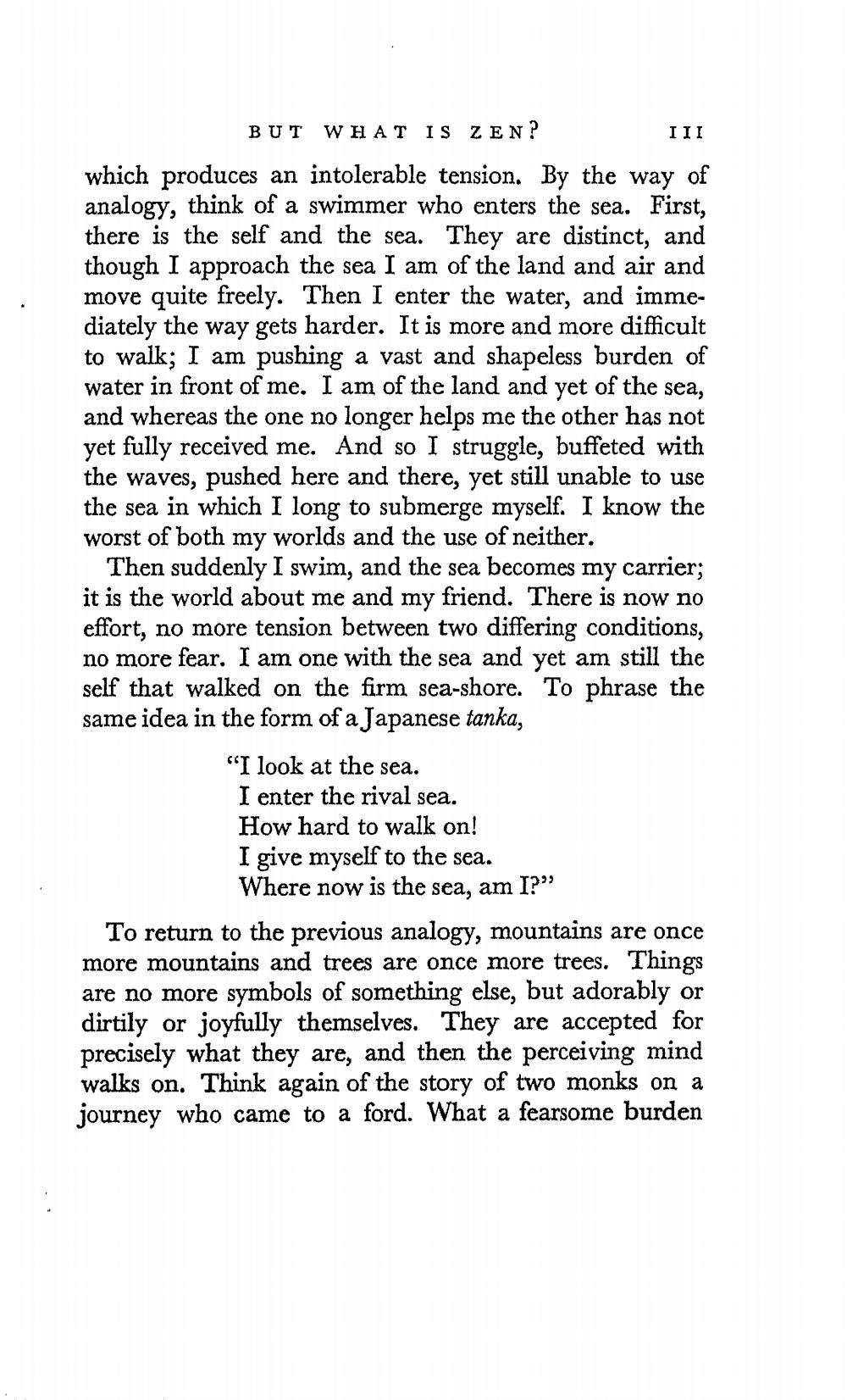________________
BUT WHAT IS ZEN?
III
which produces an intolerable tension. By the way of analogy, think of a swimmer who enters the sea. First, there is the self and the sea. They are distinct, and though I approach the sea I am of the land and air and move quite freely. Then I enter the water, and immediately the way gets harder. It is more and more difficult to walk; I am pushing a vast and shapeless burden of water in front of me. I am of the land and yet of the sea, and whereas the one no longer helps me the other has not yet fully received me. And so I struggle, buffeted with the waves, pushed here and there, yet still unable to use the sea in which I long to submerge myself. I know the worst of both my worlds and the use of neither.
Then suddenly I swim, and the sea becomes my carrier; it is the world about me and my friend. There is now no effort, no more tension between two differing conditions, no more fear. I am one with the sea and yet am still the self that walked on the firm sea-shore. To phrase the same idea in the form of a Japanese tanka,
“I look at the sea.
I enter the rival sea. How hard to walk on! I give myself to the sea.
Where now is the sea, am I?” To return to the previous analogy, mountains are once more mountains and trees are once more trees. Things are no more symbols of something else, but adorably or dirtily or joyfully themselves. They are accepted for precisely what they are, and then the perceiving mind walks on. Think again of the story of two monks on a journey who came to a ford. What a fearsome burden




